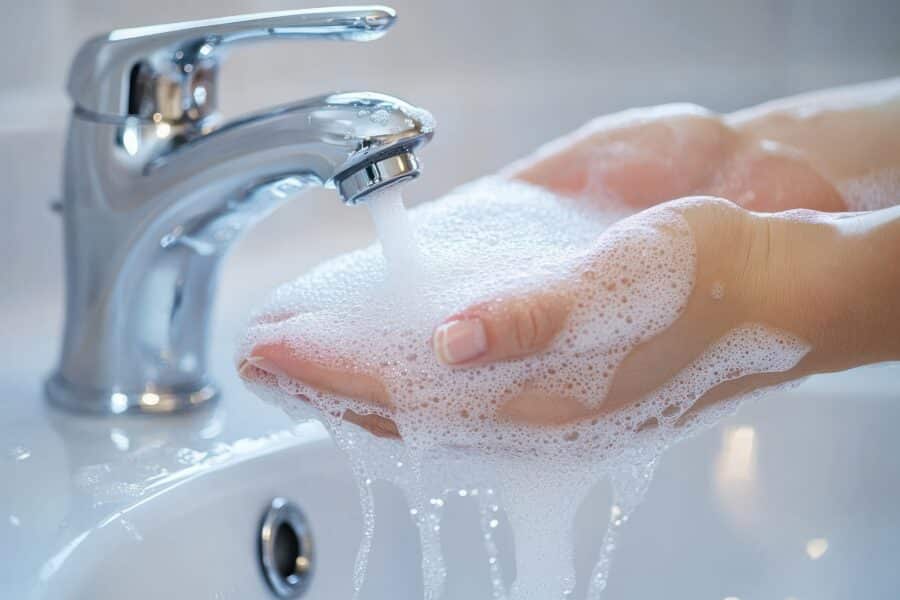A clean care home is a safe care home. But with so many moving parts—different rooms, surfaces, teams, and shift patterns—keeping things consistent isn’t always easy. That’s why having a reliable, easy-to-follow care home cleaning schedule is so important.
Not only does a good cleaning schedule reduce the risk of infection, it also gives staff clear direction, helps you meet regulatory standards, and boosts confidence among residents and families. In this post, we’ll explore why cleaning schedules matter, what should be included in a daily and weekly routine, and how you can download a free printable version for your team.
Why Every Care Home Needs a Cleaning Schedule
Running a care home involves balancing safety, efficiency, and staff time. Without a clear routine, cleaning often becomes reactive—focused only on visible mess or urgent tasks. That leaves room for inconsistency and missed details, especially across shift changes.
A structured care home cleaning schedule helps by:
-
Assigning clear responsibilities for every area
-
Ensuring all surfaces are cleaned at the right frequency
-
Supporting infection prevention policies
-
Making audits easier with initials and time fields
-
Improving staff accountability and training
Above all, it creates a culture of consistency—something every inspector (and family member) wants to see.
Daily Cleaning Schedule: Stay on Top of High-Touch Areas
The daily care home cleaning schedule covers tasks that need to happen every single day, and often more than once. These include:
-
Bathrooms: disinfecting toilets, handles, taps, and mopping floors
-
Bedrooms: wiping bedside tables, cleaning call bells, and vacuuming
-
Communal lounges: cleaning chairs, light switches, and remotes
-
Dining and kitchen areas: sanitising food contact surfaces and mopping floors
Each task is listed with a recommended product type and space for initials. This means your team can follow it step by step—and you can monitor completion with ease.
📥 [Download the Daily Cleaning Schedule]
Weekly Cleaning Schedule: Focus on Deep-Clean Priorities
While daily tasks keep things ticking, weekly cleaning takes care of the areas that don’t always get attention. Our weekly care home cleaning schedule includes:
-
Deep-cleaning bathroom walls and behind fittings
-
Cleaning windows, ledges, and en-suite facilities
-
Thorough floor care in bedrooms and lounges
These tasks are just as essential for infection control and overall presentation. By separating them from daily duties, you avoid overwhelming staff and ensure they’re done properly and consistently.
📥 [Download the Weekly Cleaning Schedule]
How to Use These Schedules in Your Care Home
To get the most out of your new care home cleaning schedule, we recommend:
-
Printing and laminating each version for use in cleaning stations
-
Briefing all staff on how to use them, including initials and time slots
-
Reviewing the checklists weekly to make sure nothing is missed
-
Customising the editable version if your home has unique needs
You’ll be surprised how quickly routines improve once your team can see exactly what’s expected—and when.
Looking for the Right Products to Match?
The schedule is only part of the picture. If you’re still searching for eco-friendly, colour-coded cleaning products that work with this routine, we can help. From surface sprays to floor cleaners, we provide everything you need to match your schedule with safe, compliant products—without overcomplicating things.
Ready to Take Control of Your Cleaning?
Don’t leave your care home’s hygiene to chance. Download your free Daily and Weekly Care Home Cleaning Schedules today and bring more clarity, consistency, and confidence to your daily and weekly routines. Need additional support? Book a Free Hygiene Consultation below for personalised advice!
Care Home Cleaning Schedule FAQ’s
How often should high-touch areas be cleaned in a care home?
At least daily—and more often on busy shifts. Handles, rails, call bells, remotes, light switches and toilet touchpoints should be disinfected several times per day.
Does a cleaning schedule help with CQC compliance?
Yes. Clear checklists with staff initials and timestamps provide evidence for Regulation 12 (safe care & treatment) and IPC policies during inspections.
What’s the difference between the daily and weekly schedules?
Daily = routine touchpoint disinfection and floors; Weekly = deeper tasks (walls, behind fittings, vents, ledges, skirtings, en-suites) that prevent build-up.
Which products should we list on the schedule?
Neutral general cleaner/disinfectant for touchpoints, bathroom descaler where needed, non-slip floor cleaner/gel, glass cleaner, and safe kitchen sanitisers. Match each to colour coding.
How do we make the schedule COSHH-safe?
Include product names/dilutions, PPE icons, and a link/location for SDS. Store chemicals locked, labelled, and away from food/meds. Train staff and record it.
How do we stop tasks being missed across shift handovers?
Use laminated, wall-mounted checklists with AM/PM/Night columns, initials, and supervisor sign-off. Review at the end of each shift and during weekly audits.
Can we adapt the template for outbreaks (e.g., norovirus)?
Yes—add an “outbreak mode” row: increase touchpoint frequency, switch to pathogen-effective disinfectant, extend contact times, and add waste/linen handling notes.
What colour coding should we follow?
UK standard: Red (toilets), Yellow (clinical washrooms), Blue (general areas), Green (kitchen/food areas). Reflect this on the schedule and on tools.
How do we keep the schedules alive—not forgotten?
Brief all staff, build them into inductions, spot-check weekly, refresh monthly, and tie completion rates to team KPIs. Keep printable and digital copies synced.





